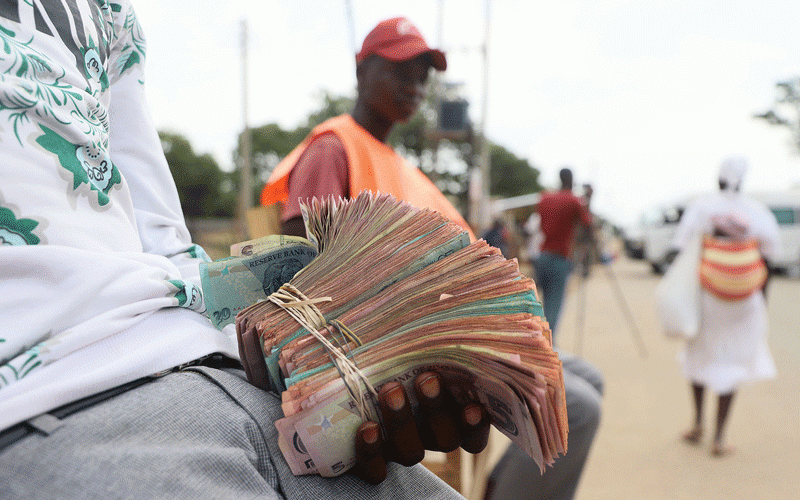
THE official auction and interbank exchange rates rose by about 100% and 150%, respectively, last month marking a significant depreciation of the Zimbabwe dollar, a new report has found.
At the start of last month, the official auction and interbank forex rates were US$1:$1 070,41 and US$1:$1 059,65, respectively.
However, owing to a huge injection of cash onto the market when government paid its contractors, by the end of May, the Zimdollar fell against the greenback to US$1:$2 577,05 on both the forex auction and interbank markets.
Following the fall of the local currency on the official markets, the parallel forex market rate shot up by US$1:$4 300 at the end of May, from US$1:$1 950 at the start of the month.
“By the end of May, the parallel, official auction system and interbank exchange rates increased by about 100% to 150% compared to last month, marking a significant depreciation of the Zimdollar. In some formal retail outlets, there are reports of artificial shortages of some basic food items as some wholesalers and retailers allegedly diverted stocks to the black market, which operates exclusively in US dollars,” the United States Agency for International Development said in its May 2023 food security update.
“The depreciation of the Zimdollar and high prices increasingly negatively impacts the purchasing power of poor households and households earning in Zimdollar.
Some basic commodity Zimdollar prices spiked by more than 100% in May, though prices in US dollars remained relatively stable.
“In response, among other measures, the government removed all import duties and restrictions for 14 basic commodities, including maize meal, flour, cooking oil, rice, milk and salt, to ensure adequate supply and cheaper commodities. Companies can also retain all their foreign currency earnings in-country to reduce demand for foreign currency on parallel and official markets and help stabilise the Zimdollar.”
- Mangudya defends new currency measures
- Mangudya defends new currency measures
- Ncube defends crumbling Zim dollar
- Ncube defends crumbling Zim dollar
Keep Reading
Among other measures put in place by government to stabilise the Zimdollar, Treasury ordered that the 25% surrender portion of export proceeds be given to the ministry to avoid money creation.
In the past, once exporters surrendered 25% of their export proceeds to the Reserve Bank of Zimbabwe, it would then give them local currency which Treasury says was done through money creation.
Money creation without economic growth in tandem leads to a currency depreciation.
While Treasury says it will source the local currency to pay exporters by accepting more tax payments in local currency, experts question its sustainability given tax compliance challenges, government contractors forward pricing models and growing socioeconomic needs.
Appearing in a news segment on News Central, a Nigerian television news channel, on Friday, economist Prosper Chitambara said as long as government did not address its financing model that relies on the Zimdollar, any other measure would not work.
“I think they (Treasury measures) will have some positive impact, but I don’t think they are going to be significant. What is needed are measures that address the massive increase in liquidity, Zimbabwe dollar liquidity which we have actually witnessed, and these are measures that lie in or are behind how government has been financing infrastructure or even the payment of farmers in the agricultural sector,” he said.
“Those factors have largely resulted in an increase, a sharp increase, in the liquidity of the economy which has caused the instability that we are witnessing. So, the financing model itself really needs to be structurally changed such that we don’t overly rely on the Treasury to finance, for example, long-term projects like infrastructure, roads or even agriculture.”
Continued Chitambara: “I think we need to be (bringing) in the private sector to also bridge the huge financing gap that we actually have in the economy.”










